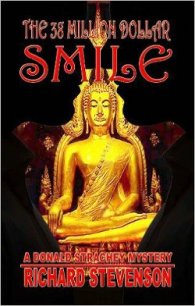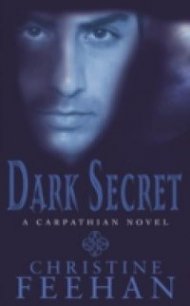Congo - Crichton Michael (книги регистрация онлайн бесплатно .TXT) 📗
4. Nairobi
FIVE MILES OUTSIDE NAIROBI, ONE CAN FIND WILD game of the East African savannah. And within the memory of many Nairobi residents the game could be found closer still-gazelles, buffalo, and giraffe wandering around backyards, and the occasional leopard slipping into one’s bedroom. In those days, the city still retained the character of a wild colonial station; in its heyday, Nairobi was a fast-living place indeed: “Are you married or do you live in Kenya?” went the standard question. The men were hard-drinking and rough, the women beautiful and loose, and the pattern of life no more predictable than the fox hunts that ranged over the rugged countryside each weekend.
But modern Nairobi is almost’ unrecognizable from the time of those freewheeling colonial days. The few remaining Victorian buildings lie stranded in a modem city of half a million, with traffic jams, stoplights, skyscrapers, supermarkets, same-day dry cleaners, French restaurants, and air pollution.
The ERTS cargo plane landed at Nairobi International Airport at dawn on the morning of June 16, and Munro contacted porters and assistants for the expedition. They intended to leave Nairobi within two hours-until Travis called from Houston to inform them that Peterson, one of the geologists on the first Congo expedition, had somehow made it back to Nairobi.
Ross was excited by the news. “Where is he now?” she asked.
“At the morgue,” Travis said.
Elliot winced as he came close: the body on the stainless steel table was a blond man his own age. The man’s arms had been crushed; the skin was swollen, a ghastly purple color. He glanced at Ross. She seemed perfectly cool, not blinking or turning away. The pathologist stepped on a foot petal, activating a microphone overhead. “Would you state your name, please.”
“Karen Ellen Ross.”
“Your nationality and passport number?”
“American, F 1413649.”
“Can you identify the man before you, Miss Ross?”
“Yes,” she said. “He is James Robert Peterson.”
“What is your relation to the deceased James Robert Peterson?”
“I worked with him,” she said dully. She seemed to be examining a geological specimen, scrutinizing it unemotionally. Her face showed no reaction.
The pathologist faced the microphone. “Identity confirmed as James Robert Peterson, male Caucasian, twenty-nine years old, nationality American. “ He turned back to Ross. “When was the last time you saw Mr. Peterson?”
“In May of this year. He was leaving for the Congo.”
“You have not seen him in the last month?”
“No,” she said. “What happened?”
The pathologist touched the puffy purple injuries on his arms. His fingertips sank in, leaving indentations like teeth in the flesh. “Damned strange story,” the pathologist said.
The previous day, June 15, Peterson had been flown to Nairobi airport aboard a small charter cargo plane, in end-stage terminal shock. He died several hours later without regaining consciousness. “Extraordinary he made it at all. Apparently the aircraft made an unscheduled stop for a mechanical problem at Garona field, a dirt track in Zaire. And then this fellow comes stumbling out of the woods, collapsing at their feet.” The pathologist pointed out that the bones had been shattered in both arms. The injuries, he explained, were not new; they had occurred at least four days earlier, perhaps more. “He must have been in incredible pain.”
Elliot said, “What could cause that injury?”
The pathologist had never seen anything like it. “Superficially, it resembles mechanical trauma, a crush injury from an automobile or truck. We see a good deal of those here; but mechanical crush injuries are never bilateral, as they are in this case.”
“So it wasn’t a mechanical injury?” Karen Ross asked.
“Don’t know what it was. It’s unique in my experience,” the pathologist said briskly. “We also found traces of blood under his nails, and a few strands of gray hair. We’re running a test now.”
Across the room, another pathologist looked up from his microscope. “The hair is definitely not human. Cross section doesn’t match. Some kind of animal hair, close to human.”
“The cross section?” Ross said.
“Best index we have of hair origin,” the pathologist said. “For instance, human pubic hair is more elliptical in cross section than other body hair, or facial hair. It’s quite characteristic-admissible in court. But especially in this laboratory, we come across a great deal of animal hair, and we’re expert in that as well.”
A large stainless-steel analyzer began pinging. “Blood’s coming through,” the pathologist said.
On a video screen they saw twin patterns of pastel-colored streaks. “This is the electrophoresis pattern,” the pathologist explained. “To check serum proteins. That’s ordinary human blood on the left. On the right we have the blood sample from under the nails. You can see it’s definitely not human blood.”
“Not human blood?” Ross said, glancing at Elliot.
“It’s close to human blood,” the pathologist said, staring at the pattern. “But it’s not human. Could be a domestic or farm animal-a pig, perhaps. Or else a primate. Monkeys and apes are very close serologically to human beings. We’ll have a computer analysis in a minute.”
On the screen, the computer printed ALPHA AND BETA SERUM GLOBULINS MATCH: GORILLA BLOOD.
The pathologist said, “There’s your answer to what he had under his nails. Gorilla blood.”
5. Examination
“SHE WON’T HURT YOU,” ELLIOT TOLD THE frightened orderly. They were in the passenger compartment of the 747 cargo jet. “See, she’s smiling at you.”
Amy was indeed giving her most winning smile, being careful not to expose her teeth. But the orderly from the private clinic in Nairobi was not familiar with these fine points of gorilla etiquette. His hands shook as he held the syringe.
Nairobi was the last opportunity for Amy to receive a thorough checkup. Her large, powerful body belied a constitutional fragility, as her heavy-browed, glowering face belied a meek, rather tender nature. In San Francisco, the Project Amy staff subjected her to a thorough medical regimen- urine samples every other day, stool samples checked weekly for occult blood, complete blood studies monthly, and a trip to the dentist every three months for removal of the black tartar that accumulated from her vegetarian diet.
Amy took it all in stride, but the terrified orderly did not know that. He approached her holding the syringe in front of him like a weapon. “You sure he won’t bite?”
Amy, trying to be helpful, signed, Amy promise no bite. She was signing slowly, deliberately, as she always did when confronted by someone who did not know her language.
“She promises not to bite you,” Elliot said.
“So you say,” the orderly said. Elliot did not bother to explain that he hadn’t said it; she had.
After the blood samples were drawn, the orderly relaxed a little. Packing up, he said, “Certainly is an ugly brute.”
“You’ve hurt her feelings,” Elliot said.
And, indeed, Amy was signing vigorously, What ugly? “Nothing, Amy,” Elliot said. “He’s just never seen a gorilla before.”
The orderly said, “I beg your pardon?”
“You’ve hurt her feelings. You’d better apologize.”
The orderly snapped his medical case shut. He stared at Elliot and then at Amy. “Apologize to him?”
“Her,” Elliot said. “Yes. How would you like to be told you’re ugly?”
Elliot felt strongly about this. Over the years, he had come to feel acutely the prejudices that human beings showed toward apes, considering chimpanzees to be cute children, orangs to be wise old men, and gorillas to be hulking, dangerous brutes. They were wrong in every case.
Each of these animals was unique, and did not fit the human stereotypes at all. Chimps, for example, were much more callous than gorillas ever were. Because chimps were extroverts, an angry chimp was far more dangerous than an angry gorilla; at the zoo, Elliot would watch in amazement as human mothers pushed their children closer to look at the chimps, but recoiled protectively at the sight of the gorillas. These mothers obviously did not know that wild chimpanzees caught and ate human infants-something gorillas never did.


![[Magazine 1968-012] - The Million Monsters Affair - Davis Robert Hart (серия книг .txt) 📗](/uploads/posts/books/56864/56864.jpg)

